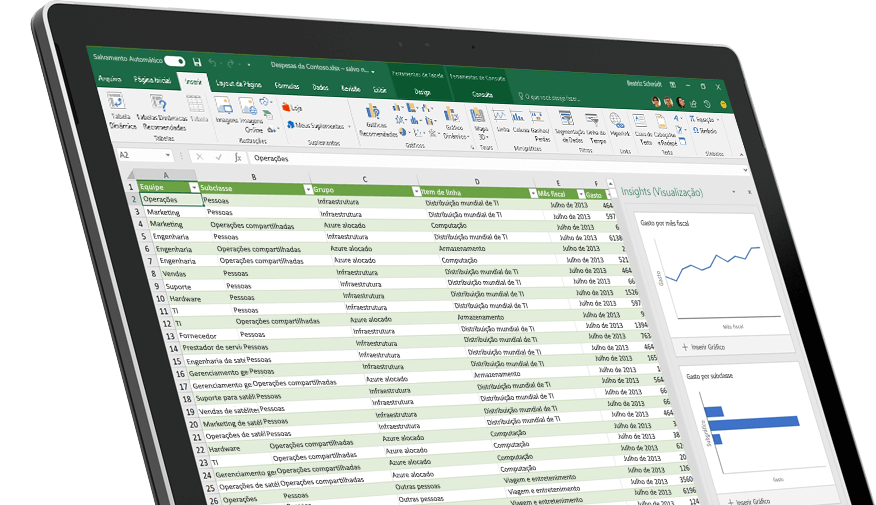The Evolution of CRM: From Spreadsheets to Smart Automation

The Evolution of CRM: From Spreadsheets to Smart Automation
Introduction
Every successful business has one thing in common strong customer relationships. But how businesses manage those relationships has changed dramatically over the years. What once started as simple spreadsheets and manual tracking has evolved into intelligent, cloud-based CRM systems powered by automation, analytics, and artificial intelligence.
In this blog, we’ll take you on a journey through the evolution of Customer Relationship Management (CRM) exploring where it started, how technology transformed it, and where it’s headed next with smart automation and AI-driven insights.
As a leading SaaS CRM solutions provider, we’ve witnessed firsthand how modern CRM tools have redefined the way businesses handle sales, support, projects, and customer engagement.
1. The Early Days of CRM: When Spreadsheets Ruled the World
In the 1980s and early 1990s, businesses had limited tools to manage customer information. Sales teams would maintain Excel spreadsheets, handwritten notes, and even Rolodex cards to store customer data.
 At that time, the primary goal was simply to record contact details names, phone numbers, and basic communication history. There were no centralized databases, no automation, and no real-time collaboration.
At that time, the primary goal was simply to record contact details names, phone numbers, and basic communication history. There were no centralized databases, no automation, and no real-time collaboration.
Key Characteristics of Early CRM Practices
- Data was manually entered into spreadsheets
- Information was often duplicated or outdated
- Sales and marketing teams worked in silos
- Customer insights were minimal
- Reporting was slow and error-prone
While spreadsheets served their purpose, they quickly became inefficient as companies grew. A single salesperson might handle dozens of leads, but an organization managing thousands needed something far more advanced.
2. The Birth of Traditional CRM Software
By the late 1990s, businesses realized that spreadsheets couldn’t scale with their growing customer bases. This led to the birth of on-premise CRM software — systems that stored customer information on local servers and offered centralized access for sales, marketing, and support teams.
The Emergence of Early CRM Tools
Companies like Siebel Systems, ACT!, and GoldMine pioneered the early CRM market. These tools allowed organizations to:
- Store customer and lead data in one place
- Track interactions across multiple departments
- Generate reports and insights
- Schedule follow-ups and tasks
However, these early systems came with limitations:
- High installation and maintenance costs
- Complex setup processes
- Limited accessibility (restricted to office networks)
- Lack of scalability
Only large enterprises could afford these systems, leaving small and medium businesses (SMBs) to continue relying on spreadsheets and manual processes.
3. The Rise of Cloud-Based CRM
The 2000s marked a revolutionary shift the advent of cloud computing. Instead of installing CRM software on local servers, companies could now access everything through the internet. This era gave birth to SaaS (Software as a Service) CRM platforms.
Why Cloud CRM Changed Everything
Cloud-based CRMs made customer management:
- Affordable: Businesses could pay on a subscription or per-user basis.
- Accessible: Teams could access customer data from anywhere, anytime.
- Scalable: Businesses could add or remove users as needed.
- Secure: Cloud infrastructure ensured data protection and redundancy.
This democratized CRM technology, enabling small businesses to compete with larger players. Suddenly, even a startup could have an advanced system for managing leads, sales, projects, and customer communication.
At this point, CRM evolved from a simple contact management tool into a strategic growth platform.
4. The Integration Era: CRM Meets the Business Ecosystem
By the 2010s, CRM had become the central hub of business operations. But as digital tools multiplied, companies needed their CRM to connect seamlessly with other applications — like email, marketing automation, invoicing, and analytics.
CRM as the Business Nerve Center
Modern CRM systems began integrating with:
- Email and Calendar Apps (for syncing communication)
- Marketing Platforms (to align campaigns with sales data)
- Accounting Systems (to automate invoices and payments)
- Customer Portals and Support Tools (for ticketing and communication)
- E-commerce and ERP Systems (to connect sales with operations)
This integration era transformed CRM into a unified business management platform, not just a sales tool. Businesses could now track the entire customer lifecycle from the first inquiry to project delivery and post-sales support all within one system.
5. The Shift to Automation: Saving Time and Boosting Accuracy
As CRM adoption grew, so did the need for efficiency. Manually updating every lead, sending follow-up emails, and tracking tasks became overwhelming. The next phase in CRM evolution focused on automation.
Automation Transforms CRM Workflows
Today’s CRM solutions can:
- Automatically assign leads to sales reps
- Send personalized follow-up emails
- Trigger reminders for overdue tasks
- Update deal stages based on activity
- Generate invoices automatically after project completion
Automation not only saves time but also reduces human error, ensuring every customer interaction is timely and accurate.
With automation, businesses can focus on building relationships instead of managing spreadsheets.
6. The AI-Powered CRM Revolution
Now we’re entering the era of intelligence where CRMs don’t just store data, they analyze and act on it. Artificial Intelligence (AI) and Machine Learning (ML) have redefined what’s possible.
How AI Enhances CRM
- Predictive Analytics: Forecast sales trends and identify high-potential leads.
- Smart Suggestions: Recommend next-best actions for sales reps.
- Sentiment Analysis: Understand customer emotions from emails or chats.
- Chatbots: Automate initial customer support interactions.
- Data Cleansing: Automatically detect duplicates and errors.
AI-powered CRMs transform raw data into actionable insights. They can tell you which leads are most likely to convert, when to reach out, and even how to personalize communication for maximum impact.
In short, CRM has evolved from being data-driven to intelligence-driven.
7. From Centralized Data to 360° Customer View
One of the biggest shifts in CRM evolution is the 360-degree customer view.
Earlier, businesses only tracked contact details and sales activities. Today, CRMs combine multiple touchpoints from marketing engagement and support tickets to payment history and feedback creating a complete profile of each customer.
Benefits of 360° Customer Visibility
- Understand customer preferences and behavior
- Improve personalization in marketing and service
- Identify upsell and cross-sell opportunities
- Increase retention through proactive engagement
- Enhance internal collaboration between departments
This holistic approach ensures every department from sales to finance works with the same, real-time customer data.
8. The Role of Mobile and Remote Work in CRM Evolution
As the global workforce became more remote, especially after 2020, mobile CRM became a necessity.
Modern CRM systems now come with mobile apps that allow teams to:
- Access leads and deals on the go
- Add notes after client meetings
- Track performance metrics in real time
- Receive instant notifications and updates
Whether a salesperson is in the field or a manager is reviewing analytics remotely, the CRM stays accessible, ensuring continuous productivity.
9. Security and Compliance in the SaaS CRM Era
With great data comes great responsibility. As CRM systems store sensitive customer information, data privacy and security have become critical.
Leading SaaS CRM providers follow strict global regulations like GDPR (General Data Protection Regulation) and CCPA (California Consumer Privacy Act) to protect user data.
Key Security Measures in Modern CRMs
- Role-based access controls
- Data encryption (in transit and at rest)
- Regular security audits and penetration testing
- Secure backups and disaster recovery systems
- Compliance with regional data protection laws
For businesses, especially in sectors like finance, healthcare, or retail, choosing a GDPR- and CCPA-compliant CRM is now a non-negotiable requirement.
10. Customization and Industry-Specific CRMs
One major advancement in CRM evolution is modular customization. Modern SaaS CRMs are built to adapt to specific industries retail, healthcare, education, manufacturing, and more.
Examples of Industry-Specific Adaptation
- Real Estate CRM: Track property listings, inquiries, and deals.
- Healthcare CRM: Manage patient communication and follow-ups.
- Education CRM: Handle student enrollment, payments, and support.
- Retail CRM: Integrate POS systems, loyalty programs, and campaigns.
Instead of a one-size-fits-all solution, today’s CRMs are tailored for unique workflows allowing businesses to achieve higher adoption rates and ROI.
11. The Rise of Self-Hosted CRM Solutions
While cloud-based SaaS CRMs dominate the market, many businesses now prefer self-hosted CRM systems for data control and one-time ownership.
Why Self-Hosted CRM Is Gaining Popularity
- 100% data ownership and security
- No recurring subscription costs
- Full control over customization and integration
- Better compliance with internal IT policies
- Ideal for enterprises and privacy-conscious organizations
Our own CRM model at Volo CRM combines the flexibility of SaaS with the security of self-hosted infrastructure giving businesses the best of both worlds.
12. Analytics and Reporting: Turning Data Into Decisions
As CRM systems evolved, so did their analytical capabilities. What once required Excel pivot tables can now be visualized through interactive dashboards and AI-powered reports.
Advanced CRM Reporting Features
- Real-time sales performance tracking
- Conversion funnel analytics
- Expense and revenue forecasting
- Customer lifetime value analysis
- Employee productivity insights
With these insights, business leaders can make data-driven decisions, not guesses improving overall performance and profitability.
13. The Future of CRM: Hyperautomation and Predictive Insights
The next wave of CRM evolution lies in hyperautomation connecting CRM with AI, IoT, and advanced analytics to automate complex processes across the organization.
What’s Coming Next
- Predictive Lead Scoring: AI identifies the most valuable prospects.
- Voice-Enabled CRM Assistants: Use voice commands to update deals or reports.
- IoT-Integrated CRM: Real-time updates from connected devices.
- Advanced Workflow Automation: Automatically route tasks between departments.
- AI-Generated Proposals and Reports: Save hours of manual work.
The ultimate goal of CRM evolution is to create autonomous systems that intelligently manage business relationships with minimal human effort.
14. Why Businesses Must Upgrade to Modern CRM Platforms
If your organization still relies on spreadsheets or outdated CRM systems, you’re missing out on enormous efficiency gains.
Key Reasons to Upgrade
- Automation: Eliminate repetitive manual tasks.
- Real-Time Data: Access accurate information anytime.
- Scalability: Grow your business without software limits.
- Integration: Connect CRM with all your essential tools.
- AI Insights: Make smarter decisions faster.
- Data Security: Stay compliant with global regulations.
Modern CRM systems are not just tools they’re strategic assets that drive productivity, profitability, and customer satisfaction.
15. The Volo CRM Advantage: Smarter, Faster, and Scalable
At Volo CRM, we’ve built our platform to represent the best of this entire evolution.
Our SaaS-based CRM combines:
- Powerful automation for sales, support, and projects
- Comprehensive reporting and analytics
- Integrated customer portals for transparency
- Secure cloud hosting with GDPR and CCPA compliance
- Easy customization for any business type
- Mobile-friendly dashboards for on-the-go access
Whether you’re a startup or an enterprise, Volo CRM empowers your team to focus on growth, not spreadsheets.
Conclusion
The journey of CRM from manual spreadsheets to intelligent automation reflects how businesses have evolved to meet customer expectations in a digital-first world.
Today’s CRM systems are smart, secure, and scalable, enabling organizations to deliver personalized experiences, make data-driven decisions, and grow faster than ever before.
As we look toward the future, CRM will continue to evolve becoming more predictive, conversational, and automated. But one thing will remain constant: the goal of every CRM is to build stronger, lasting customer relationships.
If you’re ready to move beyond spreadsheets and experience the next generation of customer management, it’s time to explore what Volo CRM can do for your business.